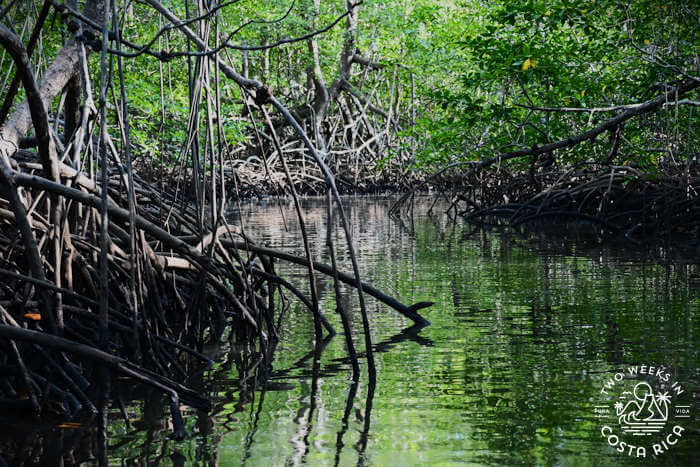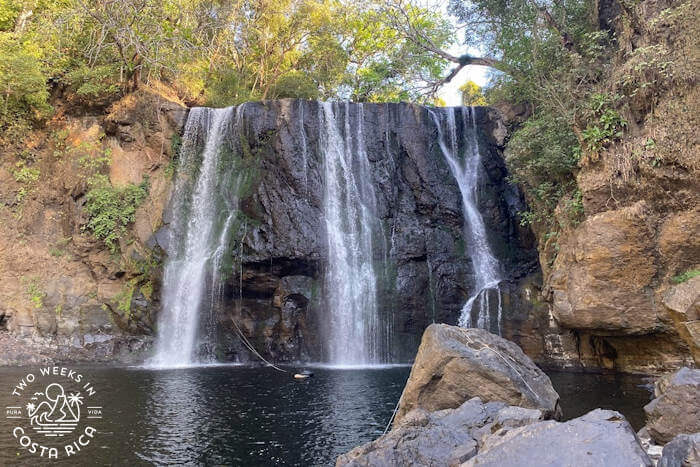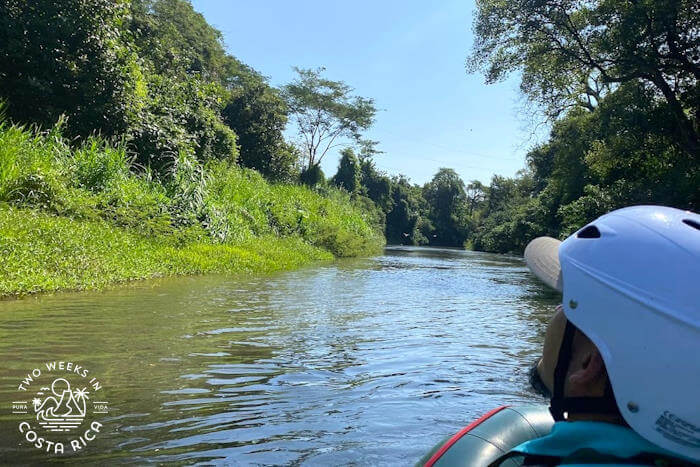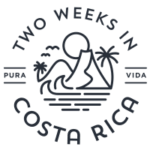Last Updated: May 5, 2023
Known as the largest lowland rainforest remaining on Central America’s Pacific coast, Corcovado National Park is a must-see for the nature enthusiast. The untouched wilderness and shear remoteness will make you feel like you’ve stepped back in time to a place where nature, not man, rules the world. In this post, we’ll give you some background on visiting Corcovado National Park.

Background
Corcovado National Park is a vast 161-square mile parcel on the Osa Peninsula. This is part of Costa Rica’s southern Pacific coast.
One of the main reasons Corcovado is so special is that it hosts the region’s largest populations of several endangered mammals. These include jaguars, pumas, ocelots, white-lipped peccaries, and tapirs. It also has significant populations of endangered birds like Scarlet Macaws and Great Curassows.
Because of its rich biological diversity, the Corcovado Foundation considers the park to be one of the world’s most important sources for future knowledge about rainforest ecosystems and conservation.
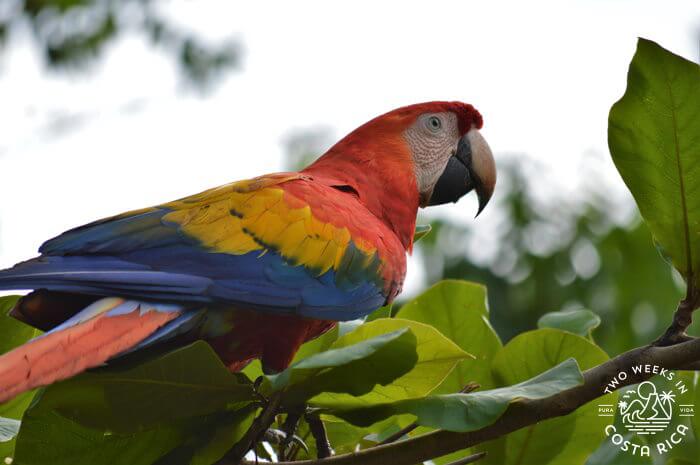
Getting There
Sometimes the best places on earth are the hardest to get to—this is definitely the case with Costa Rica’s famous Corcovado National Park.
Located in the southwest-most corner of Costa Rica on a large peninsula, the park is accessible only by foot, boat, or small charter plane. Popular jumping off points are Carate (via Puerto Jiménez) and Drake Bay.
Park Setup
Much of Corcovado is not accessible at all. The jungle is either too thick or too wet. Those areas that are passable have trails leading from one ranger station to the next.
The most commonly used trail runs to and from La Leona Ranger Station and San Pedrillo Ranger Station. It’s hard to get lost along this stretch because the trail either parallels the beach or is on the beach.
Sirena Ranger Station, the mid-point of the main trail, serves as the park headquarters and is a popular spot for day tours by boat. Read our post, Spotting Costa Rica’s Most Spectacular Wildlife at Sirena Ranger Station, for everything you need to know about visiting Sirena on a day trip.
Los Patos Ranger Station, to the east, is harder to access and less commonly used as an entry or exit point.
El Tigre Ranger Station is not far from Puerto Jimenez, making it a great option for day trips if you’re staying there.
Here is a map of the different ranger stations to help you get your bearings.
Logistics
As of 2014, all visitors (even day-trippers) must be accompanied by a registered guide.
There are many local tour companies that employ registered guides and most area hotels have individual contacts for private tours. Because hiking between any two ranger stations is at least a full day trip, campsites or simple lodges and meals are offered by the park service. If you plan to stay overnight, it is highly recommended that you make your arrangements well in advance as space is limited.
Conditions
Expect to get wet when hiking in Corcovado. This will either happen because of sweat, humidity, sudden rain, necessary river crossings—or all of the above. You may even be tempted to take a swim along one of the magnificent beaches.
Make sure to bring proper clothing and footwear, sunscreen, insect repellent, and lots of bottled water. Here’s a link to our post, 10 Daypack Essentials for Costa Rica to get you started.
Highlight
The Sirena Ranger Station is a big highlight because, besides by hiking, it can be accessed only via boat or small plane. The area around the station also provides easy viewing of a variety of plant and wildlife species.
Ann Becker, who guides small group experiential adventures in Costa Rica, had this to say about Sirena:
“I have hiked in Corcovado many times and from multiple points of entry in the past 8 years. I never tire of this extraordinary place and all its natural splendor. However, it is Sirena, the park headquarters and heart of Corcovado that calls me time and again. Even after one has arrived on the Osa Peninsula, it is hard work to get to Sirena (most often by boat or several hours of hiking). The trip is not for the faint of heart. With its myriad trails, rivers, primary and secondary forests, Sirena is unquestionably one of the most rugged areas of Costa Rica. It is hot, humid jungle. But the reward is worth it. Sirena is an ideal location to witness amazing biodiversity.
Some of my most treasured Sirena moments are those in which I have had the opportunity to experience ‘nature in action’, moments that exemplify the cycle of life: a magnificent blue morpho butterfly ensnared in the web of a golden orb spider; a crocodile floating down the Rio Sirena with a pelican tightly clasped within its jaws; a little agouti systematically and patiently readying its nest in the hollow of a fallen tree. And then there are the moments of just listening to the sounds; while the jungle may appear still, it is never silent.
In Sirena, the grandeur and magic of nature surrounds you. If you choose to visit, immerse yourself in all the sights, smells and sounds. Engage fully in the ‘here and now.’ ” –Ann Becker
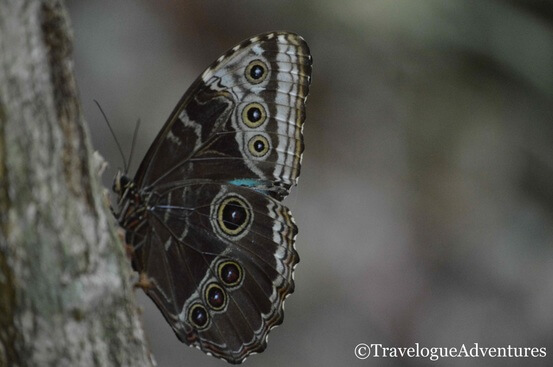
Corcovado Facts
- Park admission: $17 per day for adults, $6 per day for children ages 2-12. Rates do not include lodging or meals.
- The best time to visit is from December to April, as it is the driest.
- Temperature ranges from 27-35°C (80-95°F).
- Annual rainfall totals are between 3,000-4,000 mm (10-13 feet!).
- All four of Costa Rica’s monkey species live in the park.
Have you hiked in Corcovado? Let us know what your highlight was by leaving a comment below.
Looking for more information to plan your trip to Costa Rica? Check out these posts:
Cabo Matapalo: Wild Jungle on the Osa Peninsula – If you’re looking for an off-the-beaten path experience, Cabo Matapalo is as authentic as it gets. This area is off the grid and remains peaceful and secluded. It’s a great jumping-off point for exploring Corcovado.
Drake Bay: Costa Rica Unplugged – Drake Bay is another remote destination on the Osa Peninsula near Corcovado. It has more options for accommodations, with everything from rustic lodges to five-star hotels.
Puerto Jimenez: An Outpost to the Osa – Puerto Jimenez is the largest town on the Osa. From this side of the peninsula, you can access El Tigre Ranger Station and La Leona Ranger Station.



